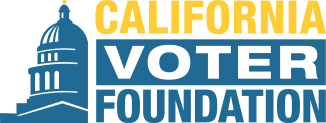In a way, it feels like the recall campaign against Gov. Gavin Newsom isn’t over.
Sure, the election results have been certified and Newsom will serve out the remainder of his term while the replacement candidates settle for a spot in the history books.
But the discussion prompted by the recall — and the demands for reform, sparked by a chorus of complaints about how these special elections work — is only getting started.
Two public hearings Thursday in Sacramento made clear there are a lot of options floating around for revamping a tool of California’s direct democracy that’s only been slightly tweaked since its creation in 1911.
The events also served as a reminder that consensus in these hyper-partisan times will be tough — if not impossible — with some who already suspect that efforts to revise the rules are a political Trojan horse, designed to secretly tip the scales in a recall election.
On the other hand, election officials view the recent gubernatorial recall as a white-knuckle ride that could have ended in disaster.
- - - - - - - -
“It really is an amazing thing that we conducted this election in September successfully in California,” Cathy Darling-Allen, the registrar of voters in Shasta County, told members of the Little Hoover Commission, the state’s government oversight and reform agency.
There’s one big difference between the recall and the initiative and referendum, the other two pillars of the state’s system of direct democracy championed by then-Gov. Hiram Johnson more than a century ago: The recall generally triggers a separate and unscheduled election. That requires counties not only to launch special preparations but to manage the ways the recall rules crash into multiple laws governing California elections that have been recently enacted.
The Newsom recall effort set in motion a 75-day timeline, but recall elections can be called in as few as 60 days after the voter-signed petitions are certified. But the state’s new law requiring ballots to be mailed to all voters lays out a requirement to begin those deliveries 29 days before an election. That leaves only a small window of time for county registrars of voters to focus on finding voting locations for those who choose to show up in person, train workers for those sites and complete tasks such as assembling voter guides and prepping to count ballots.
“The current recall statutes both in the election code and the California Constitution were developed and enacted when the model for conducting elections in California was primarily in person on election day,” Allen said. “That is no longer the case.” (Full Story)

